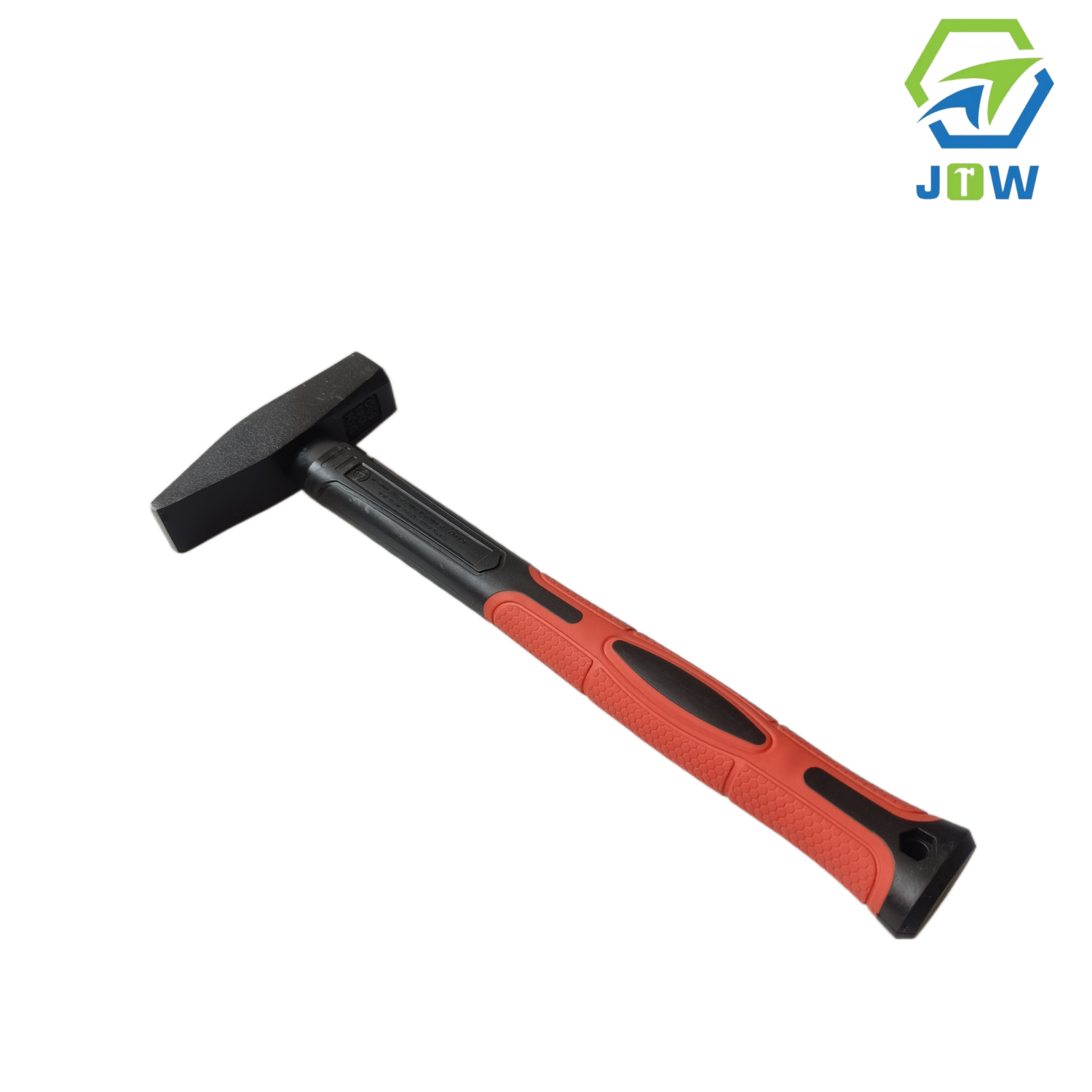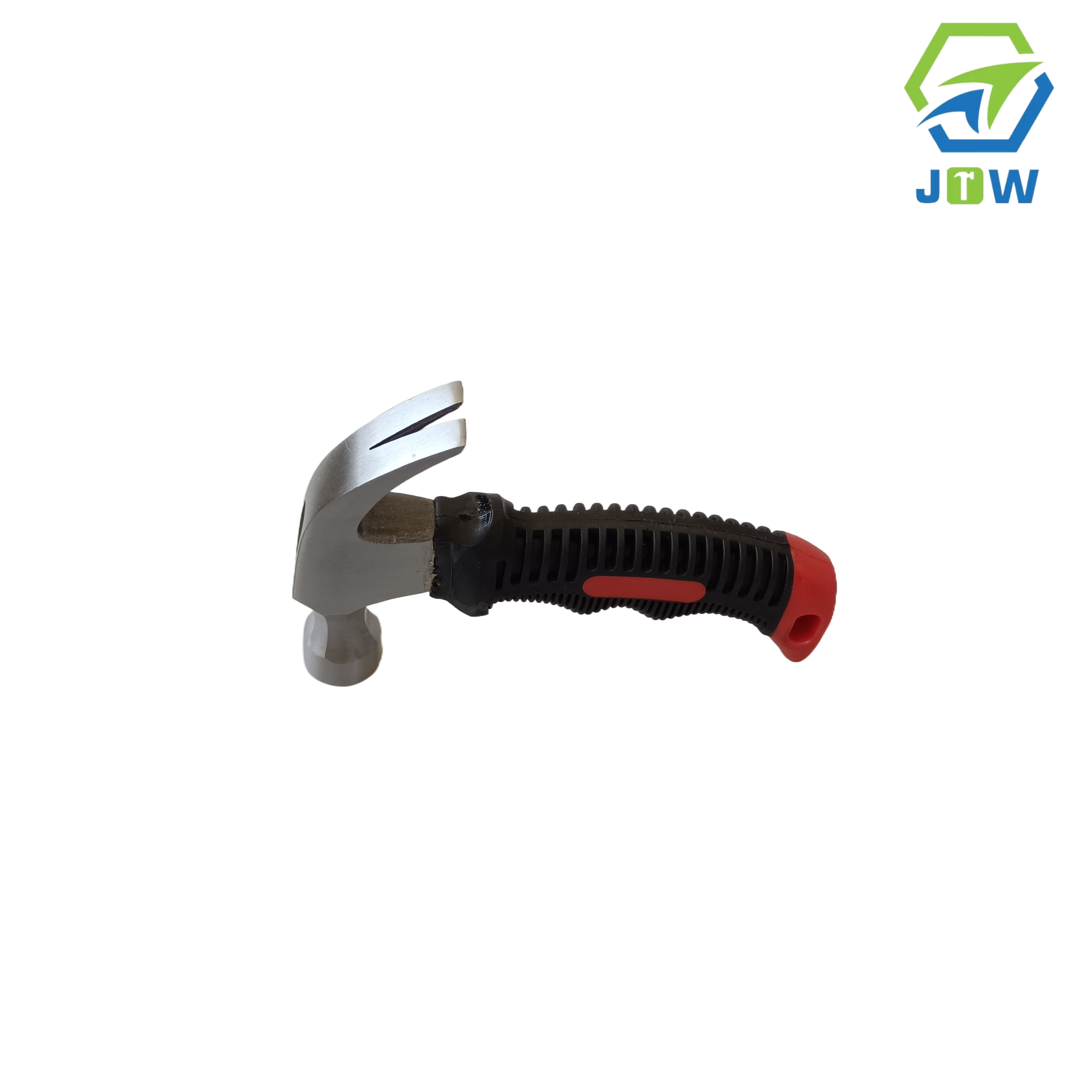Are you a carpenter looking for the perfect hammer? Or perhaps you're simply curious about this essential tool? This article provides a complete list of carpenter's hammer types, exploring their design, quality, and definition. You'll understand why the right hammer is crucial for any woodworking project and discover the various features that make a quality tool. Get ready to view the world of hammers in a new light!
What Exactly is a Carpenter's Hammer? Let's Dive into the Definition.
To put it simply, a hammer is a hand tool used for striking. When you hear "carpenter's hammer," you're usually thinking of a tool specifically designed for woodworking. A dictionary definition will tell you it's a tool with a heavy metal head mounted on a handle, used for tasks like driving nails. But it’s much more than that for a carpenter. It’s an extension of their hand, a trusted companion in their craft. We, as a factory with seven production lines in China, know that the definition goes beyond just the physical makeup; it’s about the precision and reliability it offers. For our potential customer like Mark Thompson in the USA, understanding this definition helps him appreciate the quality we strive for.
A carpenter's hammer is more than just something to bang with. The design is carefully considered for the tasks at hand. Think about the claw hammer, a common type used for both driving nails and pulling nails. That distinctive claw at one end isn't just for show; it’s a crucial feature. While there might be a synonym like "nail hammer," the term "carpenter's hammer" often implies a certain level of quality and suitability for the demanding work of a carpenter. This tool allows a carpenter to make their vision a reality, frame by frame.
What are the Different Types of Carpenter's Hammers Available? A List for Every Need.
The world of carpenter's hammers is surprisingly diverse. While the claw hammer is a general favorite, various situations call for specialized hammers. Here’s a list of some common types:
- Claw Hammer: The most recognizable type, with a curved claw for pulling nails. Often the first image that appears when you think of a carpenter’s hammer.
- Framing Hammer: A heavier duty claw hammer, often with a waffle face for better grip when driving nails rapidly in frame construction.
- Finishing Hammer: Features a smooth face to avoid marking the wood when setting finish nails.
- Ball Peen Hammer: Used for metalworking tasks like shaping and setting rivets. Though not strictly a carpenter's hammer, some carpenters working with metal might use them. You can find high-quality machinist hammers in our catalog.
- Rubber Mallet: Features a head made of rubber or plastic, used for gently tapping materials together without causing damage. These are easy to use and prevent marring. We offer durable rubber mallets with fiberglass handles.
- Dead Blow Hammer: Filled with sand or shot to prevent rebound, providing a more controlled strike.
- Drywall Hammer: Features a crowned face for setting drywall nails without tearing the paper.
- Blacksmith Hammer: Heavier hammers used in forge work.
This list isn't complete, but it gives you a good idea of the range. The best type for you’re depends on the specific application. As a leading hammer manufacturer, we understand the nuances of each type and ensure our products meet the demands of various users.
The Anatomy of a Hammer: Understanding Each Part for Better Performance.
Understanding the different parts of a hammer is key to appreciating its design and function. Let's break down the anatomy of a typical carpenter's hammer:
| Part | Description | Function |
|---|---|---|
| Head | The heavy metal end of the hammer. | Provides the force for striking. |
| Face | The flat surface of the head used for driving nails. | Delivers the impact to the nail. |
| Claw | The forked or curved part of the head (on a claw hammer). | Used for pulling nails. |
| Neck | The narrow part connecting the head to the handle. | Provides strength and balance. |
| Eye | The hole in the head where the handle is inserted. | Secures the handle to the head. |
| Handle | The long part you grip to swing the hammer. | Provides leverage and control during the strike. |
| Grip | The end of the handle designed for comfortable holding. Can be made of wood, plastic, or rubber. | Enhances comfort and prevents slipping. |
| Peen | The end of the head opposite the face. Can be ball-shaped, cross-shaped, or other designs. | Used for shaping metal, riveting, or other tasks depending on the type of hammer (like a ball peen hammer). |
Knowing these parts helps you’re understand how each contributes to the overall function and quality of the tool. For instance, a properly hardened steel head and a securely attached handle are crucial for a long-lasting and safe hammer.

What are the Key Features to Look for in a Quality Carpenter's Hammer?
When choosing a carpenter's hammer, several features distinguish a quality tool from a subpar one. Considering these will ensure you make the best choice for your needs:
- Head Material: High-carbon steel is usually the material of choice for durability and strength. The steel should be properly forged and heat-treated.
- Handle Material: Options include hickory (a strong wood), fiberglass (durable and absorbs vibration), and steel. The material affects comfort, shock absorption, and longevity.
- Balance: A well-balanced hammer feels natural in your hand and reduces fatigue. The weight distribution should feel right as you swing.
- Grip: A comfortable grip, often made of rubber or textured plastic, prevents slipping and reduces strain during prolonged use.
- Head-to-Handle Connection: The connection should be strong and secure. Epoxy resin is often used in modern hammers for a robust bond.
- Face Finish: A smooth face is ideal for finishing work, while a milled or waffle face provides better grip for framing.
- Claw Design: The shape and temper of the claw affect its ability to pulling nails effectively without breaking.
- Weight: Choose a weight appropriate for the task. Heavier hammers are for driving larger nails and lighter ones for more delicate work.
These features collectively determine the quality, performance, and lifespan of your carpenter's hammer. As a China-based factory exporting to the USA, North America, Europe, and Australia, we understand the importance of meeting international safety standards and delivering on these key features.
Claw Hammer Head Design: How Does it Impact Your Work?
The design of the claw hammer head is critical to its functionality. The claw, the most distinctive feature, comes in various shapes, each serving a slightly different purpose. A curved claw provides more leverage for pulling nails, making the task easier, especially with hard-set nails. A straighter claw, sometimes called a ripping claw, is better for prying and demolition work.
The face of the hammer head also plays a significant role. A smooth face is essential for finish work, preventing unsightly marks on the wood surface when the head strikes the nail. Framing hammers often have a waffle or milled face, featuring a textured surface that provides extra grip on the nail head, reducing slippage during rapid driving nails. This design improves accuracy and efficiency, especially when you’re working quickly to frame a wall.
The peen, the opposite end of the face, can also vary. While less prominent in claw hammers than in, say, a ball peen hammer, its shape can sometimes be used for light shaping or tapping. The overall weight and balance of the head contribute to the force and control you have during each strike. A well-designed head makes the carpenter's job more efficient and accurate.

Why Does the Handle Material of a Carpenter's Hammer Matter? Wood vs. Plastic.
The handle of a carpenter's hammer is more than just something to hold; it significantly impacts comfort, control, and durability. Historically, wood, particularly hickory, has been a popular choice due to its strength and ability to absorb shock. A wooden handle provides a classic feel and can be shaped for a comfortable grip. However, wooden handles can be susceptible to damage from moisture and can break under heavy stress.
Plastic, specifically fiberglass, has become a modern alternative. Fiberglass handles are incredibly durable, resistant to weather and chemicals, and excel at absorbing vibration, reducing fatigue during long periods of use. They are less likely to break than wooden handles under similar stress. Some handles also incorporate TPR (thermoplastic rubber) for an enhanced, non-slip grip.
The choice between wood and plastic often comes down to personal preference and the type of work being done. For those who value tradition and a natural feel, wood remains a viable option. However, for demanding jobs and those seeking maximum durability and shock absorption, fiberglass or other plastic composites are often preferred. As a company that manufactures a range of hammers, we offer both wooden and plastic handle options to cater to the diverse needs of our customers.
How to Strike Effectively with Your Carpenter's Hammer for Accurate Results?
Swinging a hammer might seem simple, but effective striking is a skill that improves with practice. Here are a few steps to help you strike accurately and efficiently:
- Grip: Hold the handle firmly but not too tightly, near the end for maximum leverage.
- Stance: Position yourself comfortably with your feet shoulder-width apart, facing your target.
- Backswing: Bring the hammer back in a smooth arc, keeping your eye on the nail head.
- Downswing: Bring the hammer down, using your shoulder and elbow as pivots. Let the weight of the head do the work.
- Impact: Strike the nail head squarely with the face of the hammer.
- Follow Through: Allow your swing to continue naturally after impact.
For beginners, it might feel awkward at first, but with practice, the motion becomes more fluid and accurate. Avoid "choking up" too much on the handle, as this reduces your leverage and makes the swing less powerful. Focus on a controlled swing rather than brute force. A proper strike will drive the nail straight and prevent bending or damaging the surrounding wood. Mastering this technique will save you time and effort on the job site.
Beyond Driving Nails: What Else Can a Carpenter's Hammer Do? Chisel and More.
While driving nails is the primary function of a carpenter's hammer, its versatility extends beyond this single task. The claw, as mentioned, is invaluable for pulling nails, whether for correcting mistakes or dismantling structures. But consider these other applications:
- Demolition: The claw can be used for prying apart boards and dismantling structures. A ripping claw is particularly effective for this.
- Light Demolition: Using the hammer head to break apart smaller items or materials.
- Chiseling: The hammer can be used to strike a chisel, allowing you to shape wood, cut mortises, or remove material. Be sure to strike the chisel squarely to avoid damaging it or the workpiece.
- Setting Objects: Gently tapping objects into place, though a rubber mallet is often preferred for delicate materials.
- Forming Metal: While a ball peen hammer is better suited, the peen of some carpenter's hammers can be used for light shaping or bending of metal.
The carpenter's hammer is a truly multi-functional tool. Its simple yet effective design allows it to perform a surprising range of tasks, making it an indispensable part of any carpenter's tool set.
Where Can You Find the Best Quality Carpenter's Hammers?
Finding a quality carpenter's hammer requires considering reputable sources. Hardware retailers are a common starting point, allowing you to physically view and handle different hammers before purchasing. However, for businesses like Mark Thompson's, who prioritize quality and competitive pricing, sourcing directly from manufacturers in developing countries like China and Vietnam is often the preferred route.
Trade shows and exhibitions, like the ones we at JTW Tools attend, provide an excellent opportunity to connect with manufacturers directly. Online platforms and B2B marketplaces also offer a wide selection of hammers from various suppliers. When sourcing, it’s crucial to follow these guidelines:
- Check Certifications: Ensure the manufacturer adheres to relevant safety standards.
- Request Samples: Inspect the product firsthand to assess quality.
- Verify Reputation: Look for reviews or testimonials from other buyers.
- Consider Logistics: Understand the shipping process and timelines.
By doing your due diligence, you can ensure you reach a reliable supplier and secure high-quality carpenter's hammers for your business. We believe in building long-term relationships with our clients by providing products that meet their expectations for quality and performance.
What are Some Common Misconceptions or Signs of a Poor-Quality Hammer? Don't Get Wrecked!
Not all hammers are created equal. Being aware of common misconceptions and signs of poor quality can save you from purchasing a hammer that will fail prematurely or even pose a safety risk.
- Lightweight Doesn't Equal Quality: While a lighter hammer might seem easier to use, excessively light hammers may not have the necessary density for effective striking.
- All Steel is the Same: The type and treatment of steel significantly impact a hammer's durability. Cheap steel can chip or bend easily.
- Loose Head: A sign of poor manufacture or wear and tear. A loose head is dangerous and reduces striking power.
- Poor Handle Connection: If the handle feels loose or wobbly, the connection is likely weak and prone to failure.
- Uneven Face: The face should be flat and smooth (or properly milled). An uneven face will result in inaccurate strikes.
- Cheap Handle Material: Handles made from low-quality wood or brittle plastic are more likely to break.
- Poor Grip: A slippery or uncomfortable grip can lead to accidents and reduced efficiency.
- Unclear Certifications: Be wary of suppliers who can't provide proper documentation of safety certifications. This is a key concern for discerning buyers like Mark Thompson.
Avoiding these pitfalls will help you select a carpenter's hammer that is safe, reliable, and will withstand the rigors of regular use. Don't let a seemingly free or cheap option wreck your project or, more importantly, cause injury.
Key Takeaways:
- A carpenter's hammer is a fundamental tool with various types for different applications.
- Understanding the anatomy and key features of a hammer helps in choosing a quality product.
- The design of the claw hammer head, including the face and claw, impacts its performance.
- Handle material, whether wood or plastic, affects comfort, durability, and shock absorption.
- Effective striking technique is essential for accurate and efficient work.
- Beyond driving nails, a carpenter's hammer can be used for tasks like chiseling and light demolition.
- Sourcing quality hammers requires careful consideration of suppliers and their certifications.
- Being aware of signs of poor quality prevents costly mistakes and ensures safety.
By understanding these aspects of the carpenter's hammer, you’re well-equipped to choose the right tool for your needs and appreciate the craftsmanship that goes into a quality product. We at JTW Tools are committed to providing durable and reliable hammers to help professionals like you succeed. Consider exploring our range of compact mini claw hammers and our selection of high-quality machinist hammers for your specific needs.
Post time: 12-30-2024





